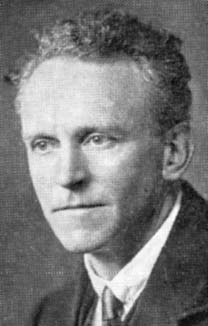


 تاريخ الرياضيات
تاريخ الرياضيات
 الرياضيات في الحضارات المختلفة
الرياضيات في الحضارات المختلفة 
 الرياضيات المتقطعة
الرياضيات المتقطعة
 الجبر
الجبر
 الهندسة
الهندسة 
 المعادلات التفاضلية و التكاملية
المعادلات التفاضلية و التكاملية 
 التحليل
التحليل
 علماء الرياضيات
علماء الرياضيات |
Read More
Date: 3-5-2017
Date: 27-4-2017
Date: 3-5-2017
|
Died: 31 January 1934 in Wellington, New Zealand

Duncan Sommerville was the son of the Rev Dr James Sommerville. He was educated at Perth Academy (less than 50 km from St Andrews) then at the University of St Andrews in Scotland. He was awarded a scholarship in 1899 to allow him to continue his studies at St Andrews. He taught there from 1902 to 1914 being appointed Lecturer in Mathematics in 1905.
Turnbull, writing in [3], describes Sommerville in these terms:-
His scholarly and unobtrusive demeanour as a young lecturer won the admiration of his colleagues and pupils in St Andrews where his teaching left a permanent mark. While he was essentially a geometer he had considerable interests in other sciences, and it is noteworthy that the classes which he chose to attend in his fourth year of study had been Anatomy and Chemistry. Crystallography in particular appealed to him, and doubtless these possible outlets influenced his geometrical concepts and led Sommerville to ponder over space filling figures, and gave an early impetus to thoughts in a field he made particularly his own. He had an original mind, and beneath his outward shyness considerable talents lay concealed: his intellectual grasp of geometry was balanced by a deftness in making models, and on the aesthetic side by an undoubted talent with the brush.
In 1915 Sommerville left Scotland for New Zealand to take up a new appointment as Professor of Pure and Applied Mathematics at Victoria College Wellington.
In 1919, when the professor of mathematics at Otago University suffered a nervous breakdown, a young student there A C Aitken was left without support and Sommerville began to tutor Aitken with a weekly correspondence.
Outside mathematics one of Sommerville's interests was astronomy and he was a founder of the New Zealand Astronomical Society as well as being its first secretary.
Sommerville worked on non-euclidean geometry and the history of mathematics. He proved in 1905 that there are eleven Archimedian tilings. His research was described by G Timmus as:-
... the classification of all types on non-euclidean geometry (including those usually excluded as bizarre), the extension, involving the measurement of generalised angles in higher space, of Euler's Theorem on polyhedra, space filling figures, the classification of polytopes (i.e. the generalisation, in higher space, of polyhedra), it is typical that this includes polytopes in non-euclidean space ...
In a review of [2] Daniel Coray states:-
By removing a finiteness condition which is habitually made on the angles formed by the various elements of a pencil (of lines, planes, etc.), Sommerville obtained more general geometries than the usual ones (Euclid, Lobachevsky, Riemann). He classified them into 9 types of plane geometries, 27 in dimension 3, and more generally 3n in dimension n. A number of these geometries have found applications, for instance in physics.
In 1911 he published Bibliography of non-Euclidean Geometry, including the Theory of Parallels, the Foundations of Geometry and Space of n Dimensions. There are 1832 references to n-dimensional geometry.
Books which Sommerville published were Elements of Non-Euclidean Geometry (1914), Analytic Conics (1924), Introduction to Geometry of n dimensions (1929) and Three Dimensional Geometry (1934). He also wrote 30 papers on combinatorial geometry.
Articles:



|
|
|
|
4 أسباب تجعلك تضيف الزنجبيل إلى طعامك.. تعرف عليها
|
|
|
|
|
|
|
أكبر محطة للطاقة الكهرومائية في بريطانيا تستعد للانطلاق
|
|
|
|
|
|
|
أصواتٌ قرآنية واعدة .. أكثر من 80 برعماً يشارك في المحفل القرآني الرمضاني بالصحن الحيدري الشريف
|
|
|